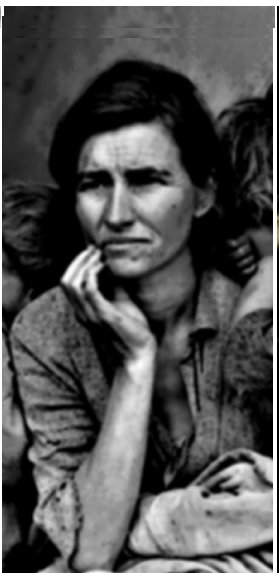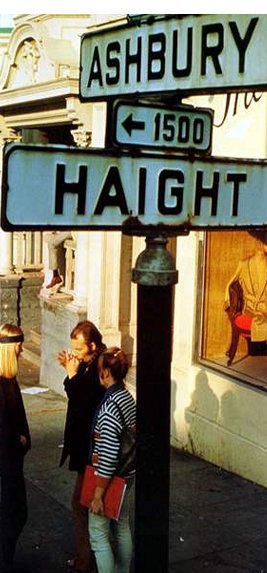Rivalry in Hollywood:
1930-50 Shant Ahuja
Gerald Horne, an African-American, is a professor of
Communication Studies at the University
of North Carolina. He received his
Ph.D. in Communication Studies and African & Afro-American Studies at Columbia
University in 1982. He has written
about eighteen books considering socialism and class/race strife in America.
His research focuses on a variety of topics such as the U.S.,
Brazil and
slavery; black labor at sea; the Communist Party in Hollywood;
and Negro fascism.
The 1930s was an era of great
advancement in the movie industry, but it was also one of the hardest times for
labor unions. Gerald Horne¡¦s Class Struggle in Hollywood: 1930-1950 -
Moguls, Mobsters, Stars, Reds, and Trade Unionists depicts the story of the
leftist union Confederacy of Studio Unions (CSU), featuring carpenters,
painters, and cartoonists and their battle with their rival International
Alliance of Theatrical Stage Employees (IATSE), a labor union with corrupt ways
of dealing with ¡§union dissidents¡¨ (Horne xi). Hollywood
had a ¡§star-system,¡¨ where titans would invest in rising actors to capture the
hearts of citizens. Hollywood was
surely a ¡§dream factory,¡¨ and these iconic actors lived glamorous lives (Horne
viii). With its glamour and magic, Hollywood
captivated Americans. On the contrary, it faced the same problems of any other
major city like Chicago or Boston
when it came to the struggle of the working class (Horne viii). The strike of 1945 led by the CSU to
augment the working class in movie production was a small-scale strike that
dramatically altered the production of West Coast films.
Horne divides the book up into four
parts, the first of which includes the introduction. It explains the outline
stated in the preface, and sets the stage for the story of the CSU strike in
1945 and their lockout in 1946. The introduction explains the different roles
of the communists, Jews, and the mob, as well as the impact the strike had on
them. The first chapter examines conflicts between labor and management in the
film industry before the strike, and the second chapter explains the role of
the communist party and its antagonist, the ¡§Red Squad¡¨ of the LAPD. Chapter
three explains the role of mobsters and their influence in the movie industry,
and chapter four shows the moguls of the movie industry. Chapters five and six
explain the CSU strike and lockout and also provide a detailed examination of
these events while scrutinizing the fall of militant labor. Finally, the
epilogue sums up the current state of the movie industry today as well as the
effect of the CSU¡¦s halt in the industry (Horne xiii). The minimization of the
labor class was imperative to the capitalists of the movie industry, and ¡§the
experience of Hollywood labor demonstrates that the Red Scare was in many ways
an attack on militant ¡¥unionism,¡¦ conducted under the guise of an attack on
communism¡¨ (Horne viii). Horne looks upon a very precarious period of time for
the movie industry in Hollywood, a
time when capitalism, greed, and fascism were at their height. Horne shows how
the workings of Hollywood
ultimately affected the social order.
Reviews show a fascination with
Horne¡¦s speculation on the working class¡¦s struggle in the movie industry from
1930 up to the strike in 1945. They admire the reality of the ¡§dream factory¡¨ Hollywood
that Gerald Horne so appropriately describes in his book. For example, a review
by Rachel Rubin, an associate professor of American Studies at the University
of Massachusetts, Boston,
and author of Jewish Gangsters of Modern Literature grasps the core
points of Class Struggle in Hollywood and addresses these points in an
understanding manner. Rubin states, ¡§the real prize for cultural historians, in
my opinion, is those moments when [Horne] shows the concrete impact of the
labor struggles on the [the book] that ultimately reached millions of
Americans¡¨ (Rubin). The average reader desires a book with an effective, direct
thesis backed by explanatory evidence that gives him/her a passionate
reflection on the subject matter. Horne¡¦s book seems to accomplish all of that
sufficiently. Rubin also notes the thorough research that Horne carried out to
publish his book. She states, ¡§In his impeccably researched book, Gerald
Home seeks to enrich our sense of
how to understand film by insisting that the roles played by all parties
involved in creating movies must be examined by scholars who are interested in
the question of how movies wield their considerable influence in American
society¡¨ (Rubin). The beauty of his work lies in the factual references it
contains in portraying the reality of the movie industry and its influence on
the American society as a whole.
The second review, by George Lewis
of the University of Leicester, UK, focuses on the Red Scare environment and
its attacks against any leftist or progressive ideas and activism. This was
used to the Hollywood moguls¡¦ advantage, as they used it
to belittle labor unions to satisfy their own greed. Lewis states, ¡§What Horne
ably demonstrates in this compelling book is that the studio moguls used the
Red Scare to mask a wider campaign to crush union strength in their industry,
and to seize control of the film production process for themselves¡¨ (Lewis).
This labor union disparagement set the stage for the Hollywood
blacklists of 1947, as ¡§by that time Hollywood¡¦s
blue-collar workers had already been purged of any militancy and had been
rendered effectively powerless¡¨ (Lewis).
The fall of the CSU is based
primarily on the rise of the mob-affiliated IATSE, a strong capitalist
organization that had strong connections with successful movie moguls such as
Joseph Shenck, the head of Twentieth Century Fox. CSU, a union featuring mainly
crafters and set designers, was being weakened with the decline in film
production. Horne states, ¡§This drop [in CSU membership] influenced the kinds
of films that could be made; for a while certain kinds of film were eschewed -
such as epics requiring large crowds, massive and costly sets, and intricate
costumes. Films which emphasized contemporary realism were favored, and many of
them were shot on location¡¨ (Horne 8). The neglect CSU faced ended in
consequences for the industry in the production of sets. This was because ¡§the
hiring of unskilled replacements increased the cost of labor, contrary to the
studios¡¦ expectations when they sacked CSU¡¨ (Horne 223). Harry Beal, a
carpenter foreman at Columbia in September 1946, described his annoyance
immediately after the lockout for the new unprofessional set designers,
claiming that, ¡§it takes three or four of these men to do one man¡¦s work, and
it isn¡¦t half done¡¨ (Horne 200). Although the studio acknowledged all of these
conflicts, they still felt they were better off without the CSU (Horne 223),
though this proved to be wrong. Horne states that over twenty-five productions
were postponed or abandoned for the duration of this controversy, shooting and
processing of color film was discontinued, ¡§dailies¡¨ were being delayed and
inexperienced workmanship retarded production to a snail¡¦s pace. As a result,
more and more actors were laid off every week (Horne 201).
Due to its leftist platform, the
CSU was a target for obliteration for almost every capitalist in Hollywood
at the time. The Red Scare had a big effect on the survivability of progressive
activism among labor unions, which had to put up with the strong anti-communist
atmosphere in major cities like Los Angeles.
Horne states, ¡§Film moguls and press barons alike charged repeatedly that CSU
was led by the Communists and that the party cadre included CSU leader Herb
Sorrel¡¨ (Horne 15), who was also accused of being a communist. On the contrary,
Sorrell was actually strongly against communism, and even ¡§filed charges
against Frank Spector, one of CSU¡¦s key operatives, for being a Red¡¨ (Horne
19). As for alliances with the Communists, the situation was controversial.
Communists in Hollywood included
writers and directors but not much of the working class. The party¡¦s theory
suggested that painters and carpenters were more likely to win battles against
moguls and bring democratic gain to society as a whole. While Communist leader
and screenwriter John Howard Lawson sought to bridge the gap between white
collar workers and blue collar workers to strengthen the union, Sorrell¡¦s
resentment towards Communists destroyed any possibility of alliance. Horne
states that ¡§some CSU leaders felt that expressing resentment toward Communists
would save them from being called Red sympathizers: they were wrong¡¨ (Horne
85). The Communist Party bore a great influence in Hollywood, as ¡§Hollywood and
the immediate area [had] become one of the main centers of CP propaganda and
activity in the United States,¡¨ and had 2,491 members by 1944 (Horne 92). There
were in fact things in common between the CSU and the Communists, such as their
belief that ¡§strikes presented a special opportunity for working-class advance¡¨
(Horne 21). However, unlike the Communists, Sorrell had a weak understanding of
tactics as a leader (Horne 16-17). A party patriarch, William Z. Foster, who
led many strikes, advised Sorrel to ¡§call off the strike officially when it
[was] manifestly lost.¡¨ Horne states that ¡§though the 1946 lockout was truly
lost as early as the spring of 1947, it actually dragged on until the 1950s¡¨
(Horne 21). All this proved to be potential advantages for the CSU to ally with
the Communists in a strike for the working class. When the strike erupted in
1945, CSU was surprisingly gaining morale, because as ¡§the Communist Party
became more favorable to the strike¡K more unions did too. By late July the
Screen Cartoonists Guild at Warner Bros. and MGM had joined the strike¡¨ (Horne
170). Unfortunately, IATSE applied the common platform shared between the CSU
and Communists and ¡§discredited the CSU, paving the way for IATSE¡¦s control
over studio labor and the moguls¡¦ control over the entire production process¡¨
(Horne 175). Supporting the ¡§Communist¡¨ CSU became a risk that many did not
want to take, especially actors under the dictatorship of the movie industry.
Horne states, ¡§The always insecure actors tended to feel that they had so much
to lose by aligning themselves with a supposedly ¡¥Communist¡¦ CSU, particularly
when their own alleged luxurious existences were viewed as largely undeserved¡¨
(Horne 112). Moreover, with many idealistic actors genuinely drawn to the left
but still non-communist, the ¡§wail of anti-communism was useful in stampeding
them to the right¡¨ (Horne 113).
Unions that were conservative and
based on capitalism fueled the supremacy of themselves and the movie industry
by crushing the CSU. With this objective, unions opposing the CSU did
everything they could to maintain their economical power, including organized
crime. The mobsters did many tasks for capital, as communists did for labor
(Horne 98). The mob in Hollywood
had a political affluence that led to its prosperity. Willie Bioff, one of the
head leaders of IATSE, ¡§had charged that in 1937 when the California
legislature began an investigation of him, he gave $5,000 dollars to the right
person and the inquiry fizzled¡¨ (Horne 105-106). Another significant union
associated with the mob was the Teamsters, a union allied with criminal gangs
within the ranks. In the book, Orsen Welles says, ¡§a group of industrialists
financed a group of gangsters to break trade unionism, to check the threat of
Socialism, the menace of Communism and the possibility of democracy¡¨ (Horne
99). Mobsters carried affiliations with moguls of the movie industry as well,
which posed another threat to the CSU. Examples of mogul affiliation to the mob
included the ¡§Warner Bros., widely viewed as the most socially conscious
studio, which collaborated with mobsters¡¨ (Horne 133) and ¡§Disney who had
connections to organized crime¡¨ (Horne 136). Capitalist driven Disney also
wanted to see the CSU fall (Horne 137). The strong opposition to the CSU proved
difficult for the militant union and soon led to their defeat (Horne 104).
The strike of 1945 was caused by a
minor union dispute, in which CSU wasn¡¦t given the proper right of jurisdiction
against their usual rival, IATSE. In 1937, 77 set decorators broke away from
IATSE to form their own organization, the Society of Motion Picture Interior
Decorators (SMPID). In 1943, they united with CSU, and in November Sorrell
tried to negotiate a contract with the producers that included the SMPID. The
producers stalled the contract negotiations for nine months, and at that time
IATSE intervened, arguing that the IATSE had jurisdiction over the set
decorators. The producers and IATSE then stalled for five more months, and at
that point Sorrell demanded immediate recognition for his alliance. In February
1945, an arbitrator was appointed by the War Labor Board who supported the
CSU¡¦s claim for jurisdiction over the set decorators. The producers were
reluctant to accept the proposal, and CSU went on strike in March of 1945,
infuriating Cecil B. DeMille, a movie mogul. DeMille then pledged to push for a
bill that would restrain the power of unions - a bill that came to be known as
the Taft Harley legislation. This act was vetoed by President Truman, as he
argued that it conflicted with important principles of the society, but was
later amended into the National Labor Relations Act to prohibit unfair labor
practices (Horne 195). In July of 1946, CSU proceeded again with a strike ¡§and
within hours had won a stunning 25 percent wage increase, along with a 36 hour
workweek with time and a half pay for any overtime¡¨ (Horne 195). This sparked
further strikes by various unions, ¡§which reminded the public of the volatility
in the entertainment industry that CSU had come to symbolize¡¨ (Horne 197). In
September, a technological development led to studio labor¡¦s demise. This
¡§system of studio design,¡¨ invented by ¡§producers¡¦ labor administrator Fred
Pelton cut costs by 30 percent in set construction and operation costs (Horne
197-198). This and the frustration of the management of Hollywood
resulted in the lockout of 1946.
¡§At a meeting of ¡¥major CIO and
independent unions¡¦ it was noted that ¡¥management had devised a new, powerful
strategy to smash unions. This new strategy was¡K to force a lockout with
impossible demands and widely publicize the lockout as a ¡¥strike,¡¦ then bargain
unions down to the lowest possible minimum and stall final settlement to starve
out the union members and families¡¨ (Horne 198). Despite the lockout, in 1952
¡§CSU sued the major studios and IATSE, charging a joint conspiracy to destroy
the federation and independent producers¡¨ (Horne 224).
Even now, Hollywood still remains
essential to the financial health of leading banks; in 1997 ¡§total movie
related employment in LA County stood at 500,000, generating $25.6 billion in
economic activity¡¨ (Horne 229-230). The labor class of the movie industry no
longer poses a threat to management, and writers ¡§share a portion of the profits
of successful movies,¡¨ an agreement made by Columbia to advance writers¡¦ salary
potential. Mobsters still control many unions, and the Communist Party has
faded (Horne 234-236). IATSE¡¦s victory in 1946 couldn¡¦t prevent its demise, and
since then it ¡§has lost tremendous strength¡¨ (Horne 236). Apologies were given
to the blacklisted actors and writers in 1997 after ¡§a tsunami of press
coverage¡¨ (Horne 239). To this day, the labor class effort from 1930-1950
remains a story forgotten because of the shame ¡V ¡§One movie that Hollywood
has never produced and probably never will is the story of its own
unionization. Any number of producers would be placed under physicians¡¦ care if
the idea were seriously suggested¡¨ (Horne 240).
1. Horne, Gerald. Class Struggle in Hollywood
1930-1950. 1st. Austin, TX:
University of Texas
Press, 2001.
2. Rubin, Rachel. "Class Struggle in Hollywood:
Moguls, Mobsters, Stars, Reds, and Trade Unionists.(Book Review)." Radical
Teacher 12/22/2003 1 Jun 2008
<http://www.encyclopedia. com/doc/1G1-114242820.html>.
3. Lewis, George.
"Class Struggle in Hollywood, 1930-1950: Moguls,
Mobsters, Stars, Reds, and Trade Unionists." Scope 00/02/2004 1 Jun 2008 <http://www.scope.nottingham.ac.uk/
bookreview.php?issue=feb2004&id=297¡±ion=book_rev>.
4. "The Sixtieth Anniversary of the ¡§War for Warner
Brothers¡¨." Local 728 (2005) 4
Jun 2008 <http://www.iatse728.org/home/strike.htm>.





















